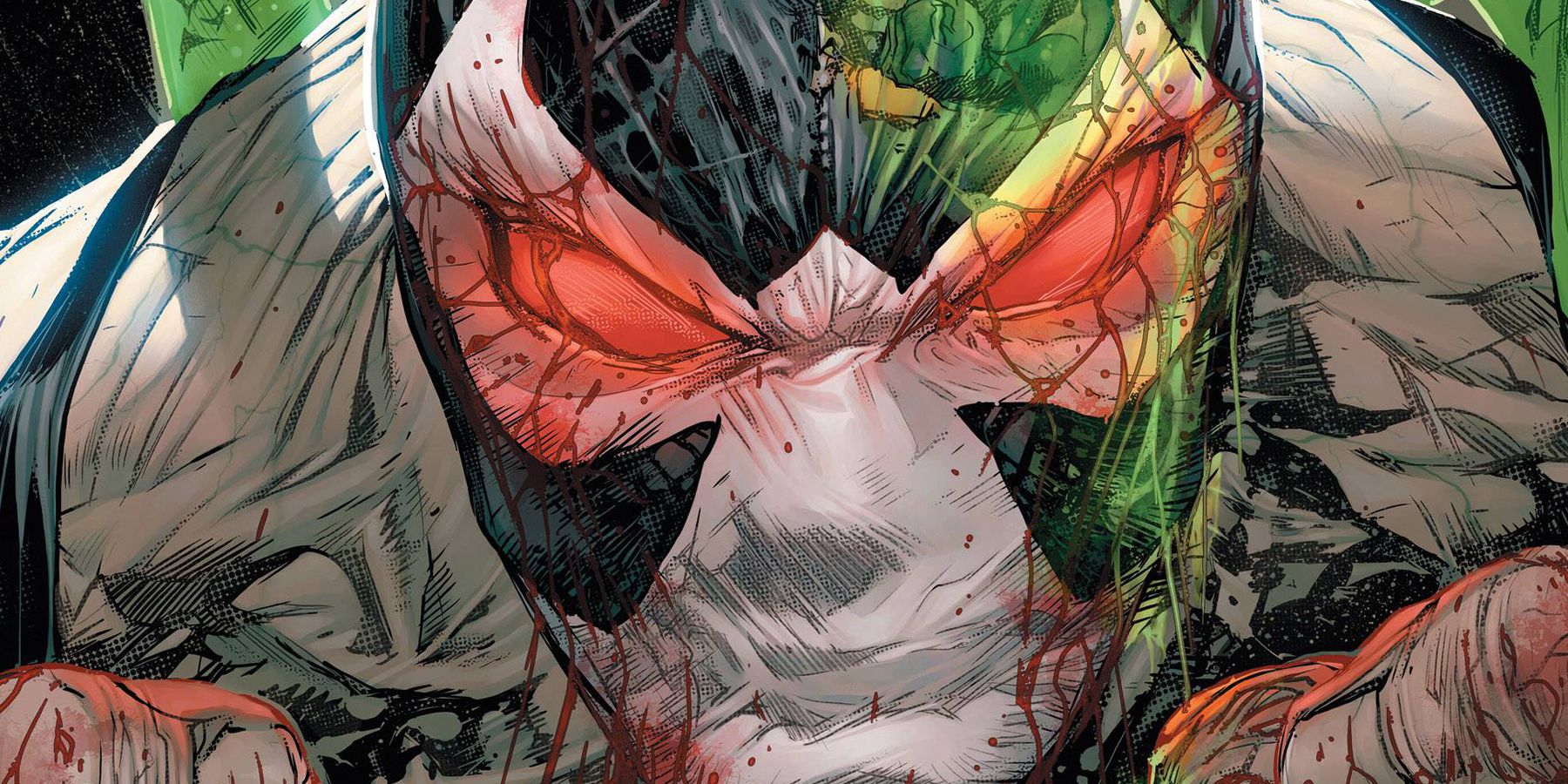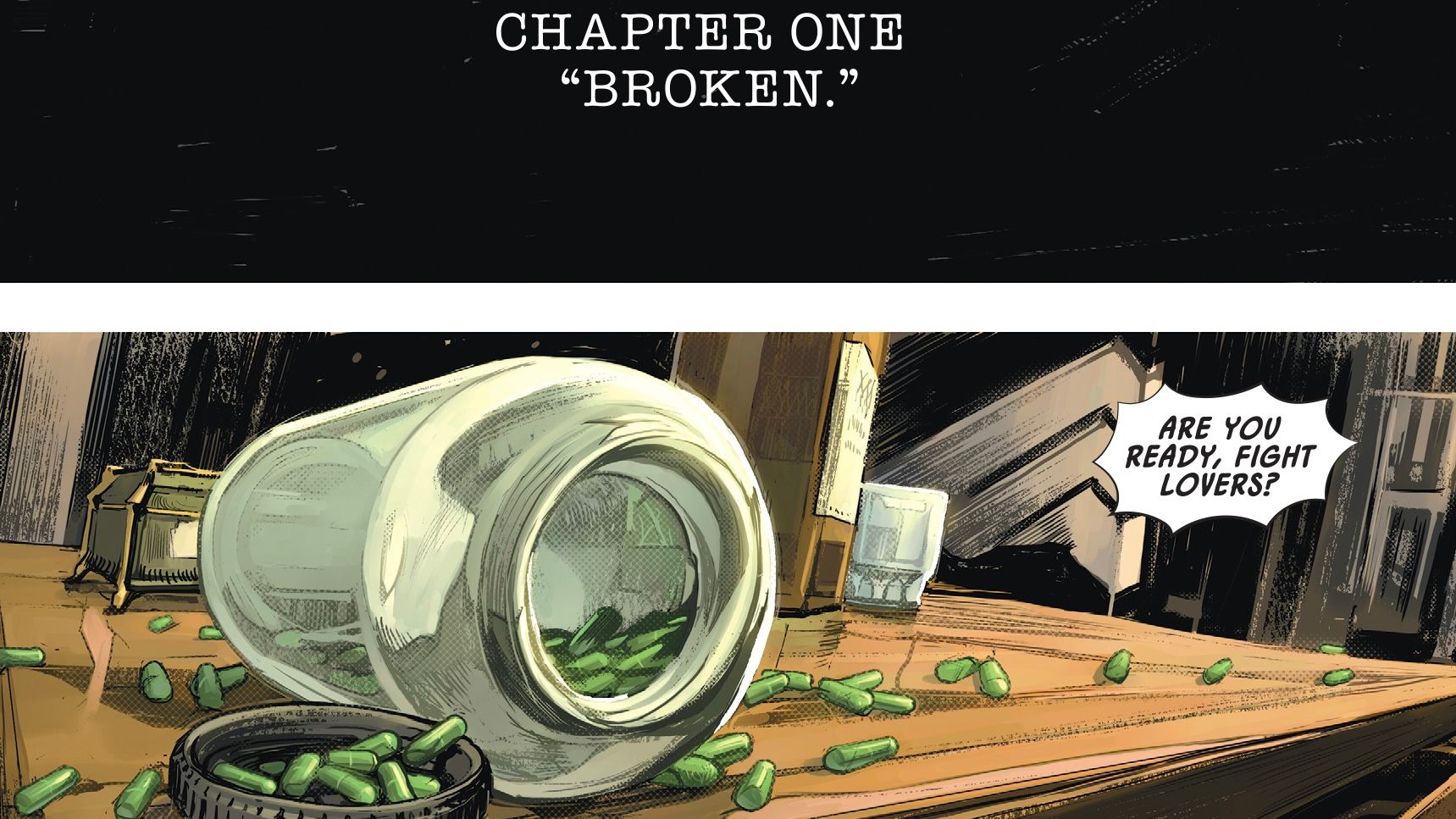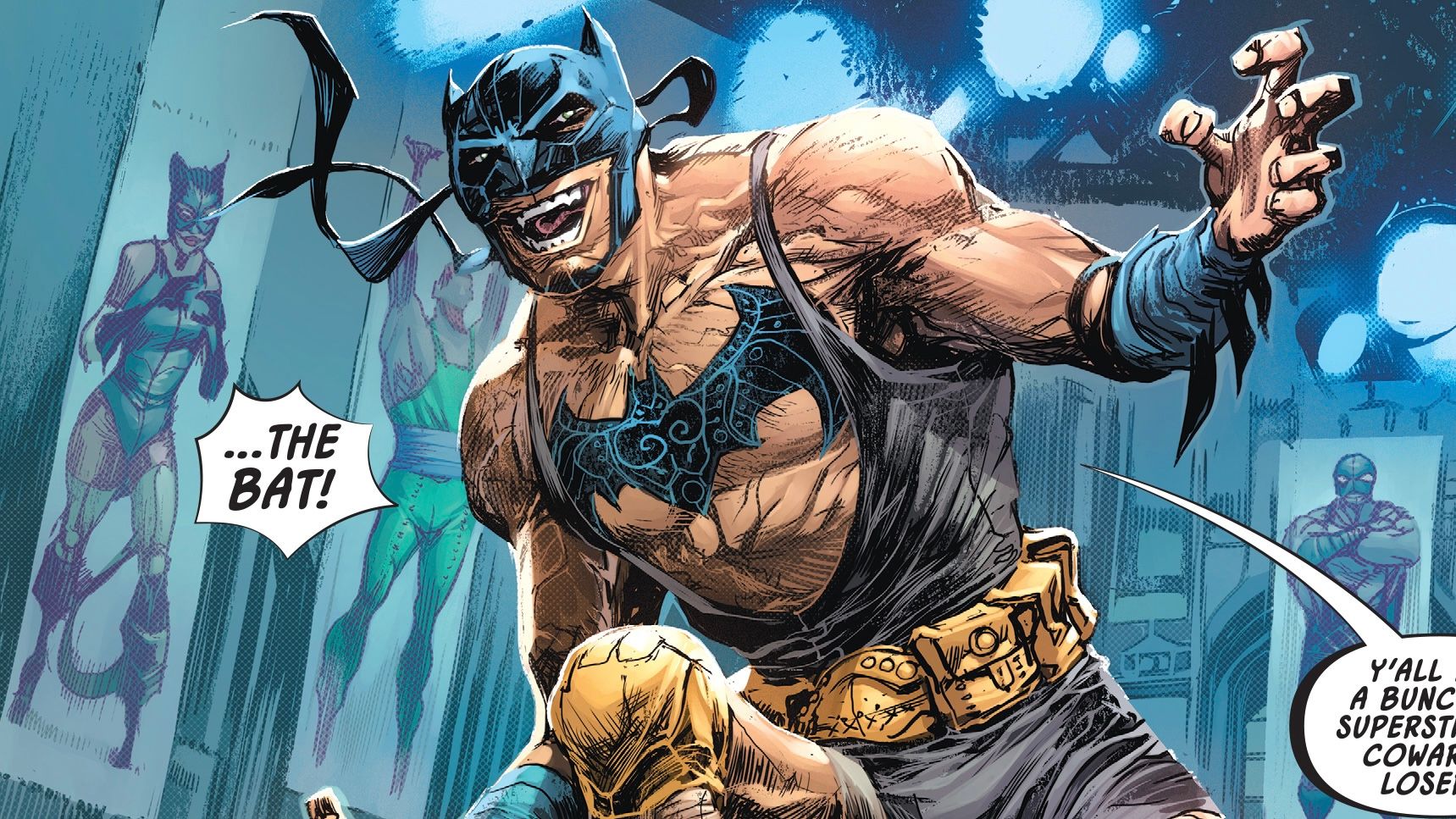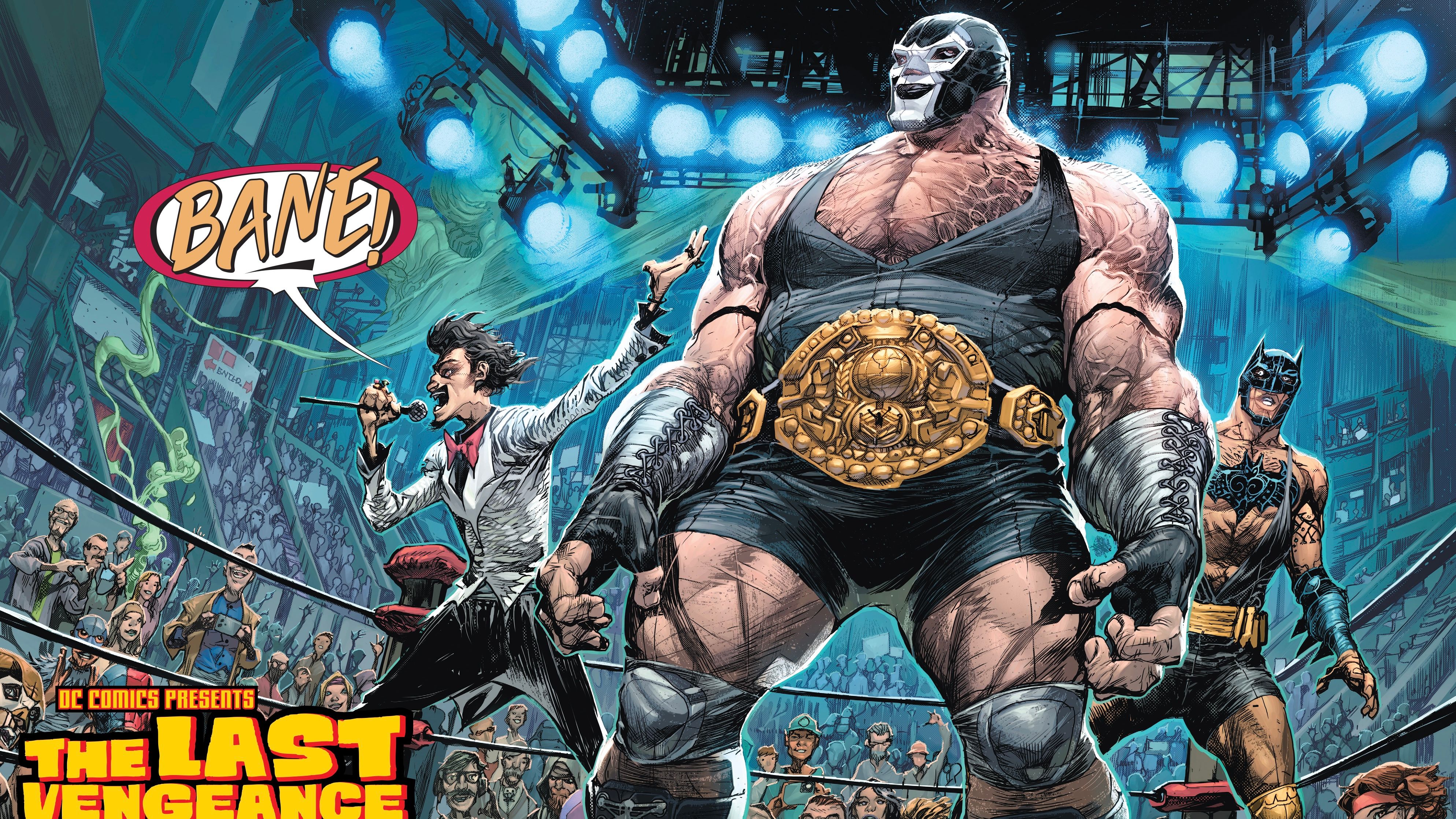Bane is one of Batman's most formidable enemies. Breaking onto the scene in January 1993 in the pages of Chuck Dixon and Graham Nolan's Batman: Vengeance of Bane #1, the character is immediately established as an equal to Batman both physically and mentally. In the now-iconic Knightfall event, Bane became the first villain to "break the bat," breaking Batman's back after mentally exhausting the Caped Crusader. He instantly earned his status as an A-list Batman villain, and he's been a staple in the Dark Knight's rogues' gallery ever since.
With the Batman: One Bad Day series of one-shots, Bane is, once again, thrust into the spotlight. This issue, written by Joshua Williamson with art by Howard Porter, follows the legendary villain as he struggles to live in the shadow of his greatest victory. Set in the later days of Bane's life, the story confronts his past and examines how his triumphs and failures shape his future. CBR had the opportunity to chat with Williamson and Porter about Batman: One Bad Day - Bane #1 and what crafting a story like this meant to them.
CBR: Congratulations on the launch of this book! What is it like to finally have this comic released?
Joshua Williamson: The last year, I've been so focused on massive event comic storytelling that involved multiple worlds and a zillion characters. It was great to focus on Bane in a one-and-done story. Working on Bane last year was a nice break from world-ending style storytelling, and we put our hearts into it, so it's awesome to finally share it.
Howard Porter: It's truly a pleasure to share this with the comic world. We put so much into this book. I feel I left a piece of me in there somewhere. It was quite a journey making it -- for Bane and us.
Joshua, there has always been symmetry in Batman and Bane's relationship. What was it like writing about them working together and exploring their respect for each other? Howard, what are some of the thrills of drawing the pair fighting together instead of against each other?
Williamson: It's been told before. They have similar backgrounds, and they both handled their fears and obsessions differently. But in another world, they COULD have been allies. They hate each other but know and respect what each other has done. Like Bane says in the issue, they have an "understanding."
Porter: It was amazingly fun. Seriously, when you are young and aching to draw comic books, this is exactly what you dream about drawing. Josh sent Bane and the Bat around the globe smashing drug dealers, and I vicariously joined them, acting out all their moves before drawing. True, there are some boot marks on my walls from the wheel kicks, but those will be timeless reminders of two iconic enemies joined together for a common cause. I was on the edge of my chair as I frantically scribbled and wondered if the next panel was the one where Bane pummels his unsuspecting partner.
Joshua, you've talked about this story being Bane's version of The Dark Knight Returns. What were some of the challenges of getting into the head of an older Bane? Howard, some of the early pages in the story feel eerily similar to Bruce lurking about Wayne Manor. What was it like bringing Bane's solitary home to life?
Williamson: Bane is quiet and reserved. Very much in his head a lot. That's true of his first appearance, too. So, the trick was to use visual language to get into his head. Which meant I relied on Howard a lot. I gave him a lot of direction, but I knew Howard could pull it off. As for him being older, I just put myself in his shoes. That idea that he had peaked so long ago when he broke Batman and how he felt that every day since he's been defeated. It was a bit of a meta-take on the character, but once I figured that out, the rest came easy.
Porter: Having lived a mostly solitary life, I had a lot to draw from. Bane's collections of memories keep him company in the silent darkness, trying to find some contentment in the aloneness. I particularly enjoy building environments in stories, escaping into them, and exploring. His dark lonely mansion full of empty halls and keepsakes is an important character in the tale.
There are a lot of sequences in this issue that are wordless and told purely through art. How much of what is on the page was directly in the script? Howard, what are some differences between creating a silent page versus one that will have dialogue or narration?
Williamson: I love silent pages. I'd rather write less dialogue and let the art breathe every chance I can. Nearly everything in the comic was in the script, but Howard and I have worked together for a while now and know each other. I know which scenes to take a step back and let Howard take over. He's a genius storyteller. There is a page in this issue that has like 100 panels on it, and that was all Howard's call. Haha.
Porter: Everything that is drawn on the page is in the script. Josh is very deliberate and precise with his writing. There are Pages where he may suggest that I break free and add panels for effect, but it's all in the script as far as what is happening. After such a long working relationship, I feel with just a few words, I know exactly what Josh is thinking, and we have a pretty deep catalog of scenes to draw from. Drawing silent pages is the same as any other. It's all about the acting and emotions on every single page. If there is no dialogue helping you out, though. It's up to you to build tension and emotion using panel sizes, layout, lighting, and directing. If you ever need inspiration, watch old black-and-white movies or pull out those Will Eisner Books.
This book explores Bane's addiction to venom. This time, he's on a mission to eradicate it from the planet. Joshua, what made this the next logical step in his journey for you?
Williamson: I've been a fan of Bane ever since Vengeance of Bane hit the racks, and I've read all of his appearances. This felt like the natural continuation of his story. This was always the path Bane was on. When he was still in prison, his fears manifested as Batman, and he always felt he needed to break Batman to defeat it. But I think there was a part of Bane that now felt he needed to break venom.
Howard, there are some pretty brutal fights in this. What was it like getting to draw Bane let loose in a more mature title?
Porter: I quite enjoy drawing action scenes. Trying to create movement in a static image is a challenge I am always up for, and there is a healthy share of that in this book. I don't think we went too graphic with things, but there are definitely a lot of bodies on the floor and flying through the air. I must say that it is a healthy release for a mellow fellow such as myself to let out their aggression through cartoon characters smashing each other to bits. I highly recommend it!
Readers get to see the return of Dr. Porter, the man behind the creation of venom. Joshua, how early on did you decide he needed to be there for this story, and what was it like writing his character? Howard, Dr. Porter comes back looking quite a bit different than fans are used to. What was the process of rendering this venom-infused version of the character?
Williamson: I knew Doctor Porter needed to be there from the moment I crafted the story. If we're going to "beat venom," we also need to go into its origins, which meant revisiting the classic "Venom" storyline. Writing him was fun! He's such a cold-blooded character, calm and manipulative. This is a guy who manipulated Batman! And set in motion a lot of intense stuff in Batman mythology. How can we do a story about venom and not include him?
Porter: We all worked very closely on visually designing the characters in the book. Josh had a vision, and we tried to capture it. After a few passes back and forth, we arrived at making the good doctor into the physical monster that truly compliments his personality -- someone who has the strength to take on Bane in a hand-to-hand battle and win. The years of experimenting have turned Porter into a horror that you might find in an old Creepy or Eerie magazine. Something Bernie Wrightson might have dreamed up. It is unnerving working on a character with your own name. It made the situation a bit surreal, to say the least.
Thank you both for your time! As a final question, if you each had to pick just one moment from the issue that's your favorite, what would it be?
Williamson: I loved to see the wrestling pages. But that scene where Bane admits that he feels like the day he broke Batman was actually the day HE broke is the emotional core of the whole issue.
Porter: Easy. The ending, Josh writes the best endings. The final pages are deep, meaningful, and beautiful. Thank you, Josh.
Batman: One Bad Day - Bane #1 is on sale now.




